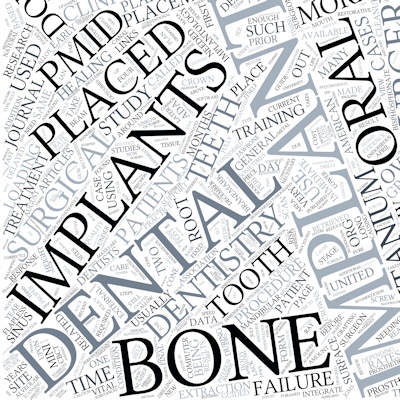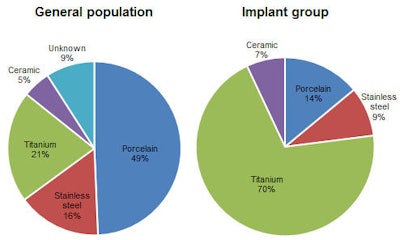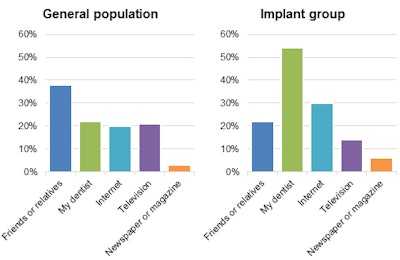
How much do your patients know about dental implants? Not as much as you may think. A new study found that 1 in 4 people in the general population has never heard of dental implants and that two-thirds of patients think implants consist of porcelain.
Researchers from Virginia Commonwealth University (VCU) asked more than 100 patients at two of the school's dental clinics about their implant knowledge. They hope their study findings, which were published in the July issue of the Journal of Oral and Maxillofacial Surgery (Vol. 75:7, pp. 1387-1391), will give providers a better understanding of what patients know about implant treatment.
"The general public is often uninformed or misinformed regarding whom to consult for such treatment and the costs involved, as well as the procedures performed and the proper aftercare," wrote the authors, led by George Deeb, DDS, MD, an associate professor at the VCU School of Dentistry. "Understanding what patients know about dental implants and where their knowledge comes from is important for translation into improved clinical care."
Knowledge gaps in the general population
Dental implants are becoming an increasingly popular treatment option, but they are still a relatively new procedure. As such, some patients may not know about implants, and those that do may be misinformed or lack critical knowledge. The researchers, therefore, wanted to gauge just how much the general public knows about implants and how their knowledge compares with that of those specifically seeking implant treatment.
To find out, the researchers sent a voluntary survey to two groups of patients visiting the VCU School of Dentistry dental clinics. The first group consisted of 50 patients at the school's emergency dental clinic. These patients were not there for implants, and the researchers considered them to be representative of the general population.
The second group consisted of 76 patients who were at the school's implant clinic specifically for an implant screening. The researchers hypothesized these patients would be more knowledgeable about implants.
What material are dental implants made from?

About 25% of the general public who were at the school for emergency dental care had never heard of dental implants. The general public group was also more likely to select porcelain as a material used for implants.
In contrast, nearly all the patients who were at the clinic for an implant screening knew about implants, and 70% correctly identified titanium as a material used for implants. The patients in the implant screening group were also significantly older, more educated, and more likely to have previous implant experience than those visiting the emergency clinic.
Where did you obtain most of your information about dental implants?

Sources of information about implants were another of the largest variances between the two groups. About half of the patients in the implant screening group relied on their dentist as a source of information, and only 14% used television as an information source. In contrast, friends and family were the top implant information sources for the general public group.
"It is evident from this study that a large percentage of people are now aware of implants as a means of replacing teeth; however, the fact that 25% of group I [general public] respondents were unaware of this indicated that there is still a need for greater education of the general public," the authors wrote.
Need to educate public
One of the larger study shortcomings was that the researchers relied on patients visiting a dental clinic as the control group and to represent the general population. The patients who were at an emergency dental clinic may have more dental knowledge and different concerns because they were actively seeking dental care, the study authors noted.
Nevertheless, the study findings point to a need for dentists to educate more of the general public about implant treatment and also to confirm that patients seeking implant treatment understand the procedure and costs.
"Although this study showed that patients presenting for dental implants are generally better informed than the general public, the fact that even in this group, some were less knowledgeable than others indicated that there is still a need for public education," the authors concluded.



















